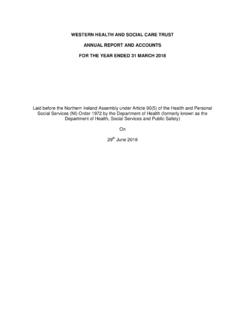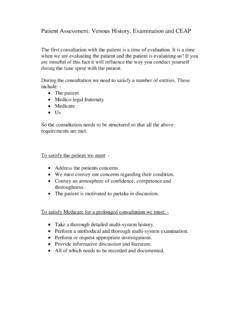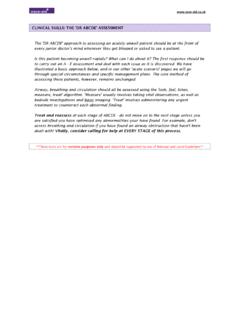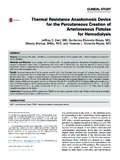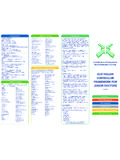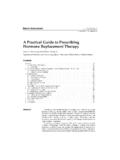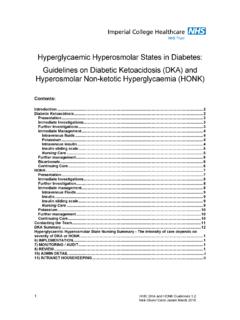Transcription of Policy for the Recording of Fluid Balance Intake-Output 2
1 Corporate Nursing Document Policy FOR THE Recording OF Fluid Balance / intake OUTPUT To be read in conjunction with: Guidelines for management of peripheral intravenous lines, Infection Control Manual NMC Guidelines for Records and Record Keeping Policy on the Administration of Intravenous Drugs and Fluids Policy for Prescribing Intravenous Fluids to Children Date: April 2008 Directorate of Nursing Review: April 2010 OFFICE REFERENCE NO. Policy REFERENCE Director Signature: _____PRINT Name: _____Date_____ Chief Executive Signature: _____Elaine Way Chief Executive Date_____ Page 2 of 7 Guidelines for the Recording of Fluid Balance / intake Output Table of Contents Introduction 3 Definition 3 Aim/Scope 3
2 Assessing Fluid Loss / Fluid Gain 4 Rationale for Recording Fluid intake / Output 4 Recommendations for Best Practice 5 References 7 Page 3 of 7 Guidelines for the Recording of Fluid Balance / intake Output IntroductionIntroductionIntroductionIntr oduction assessment of Fluid Balance requires close observation and monitoring of the patient, recognising that certain groups of patients such as the elderly and children are at particular risk. Patient assessment must be guided by an understanding of the basic principles of normal physiology and how illness or injury can cause Fluid / electrolyte imbalance. Nursing assessment of Fluid Balance must include, knowledge of the history of the patient, careful examination and clinical observation and an understanding of the significance of laboratory data.
3 (Place & Field 1997) DefinitionDefinitionDefinitionDefinition Fluid Balance is the Recording of intake and output of Fluid and balancing of the both (Sheppard 2002). Recording intake and output tends to be the key activity undertaken at the bedside and is used along with certain laboratory reports to set required Fluid intake levels. Accuracy in Recording Fluid intake and output is vital to the overall management of certain patient groups and to facilitate correct prescribing of intravenous and subcutaneous fluids. AimAimAimAim To ensure that nursing staff apply a safe and consistent approach to the assessment , Recording and monitoring of an individual patient s intake and output ScopeScopeScopeScope This Policy applies to the management of Fluid Balance in patients within in patient facilities in the WHSCT Page 4 of 7 Guidelines for the Recording of Fluid Balance / intake Output Assessing Fluid Loss / Fluid Gain Assessing Fluid Loss / Fluid Gain Assessing Fluid Loss / Fluid Gain Assessing Fluid Loss / Fluid Gain Assessing Fluid loss: Fluid Gain:Direct patient observations: Weakness and fatigue Peripheral oedema Reduced skin turgor/dry skin Distended neck/ peripheral veins.
4 Dry tongue/oral membranes Ascites, pleural effusion Clinical measurements: Tachycardia, low pulse vol. Full pulse volume, usually raised. Hypotension Polyuria (intact renal function) Reduced central venous Increased central venous pressure Pressure. Postural hypotension Cool peripheries: vasoconstriction Oliguria Slow capillary refill Weight loss Laboratory findings: Increased serum osmolarity Reduced plasma urea. High urine osmolarity and Reduced haematocrit Specific gravity. Increased plasma-urea concentration. (Sheppard 2002) Rationale for Recording Fluid intake / OutputRationale for Recording Fluid intake / OutputRationale for Recording Fluid intake / OutputRationale for Recording Fluid intake / Output The reason why a patient s Fluid intake and output needs monitored should be stated in their medical and nursing notes and should also indicate when this monitoring will be likely to cease.
5 Levels of Fluid intake and targets to be achieved within any given time should be stated on the Fluid Balance chart. Lack of keeping to a target should be reported on regular intervals throughout the 24-hour period. Page 5 of 7 Guidelines for the Recording of Fluid Balance / intake Output Recommendations for Best Practice Recommendations for Best Practice Recommendations for Best Practice Recommendations for Best Practice Fluid Balance / Intake-Output When Recording Fluid Balance , it is important to be clear as to whether a Fluid Balance record is required accurate volume in and out, which are balanced and reported at a given time every 24 hours. Or whether an intake / output record is required which indicates an approximation of a patient s hydration needs, it is necessary for the reason for Recording Fluid Balance to be explicit in the nursing documentation. Requirements over 24 hours In order to be able to assess whether or not a patient has received adequate (or more than required) Fluid intake , clinicians need to be able to ascertain what an individual patient 24 hour total should be.
6 Otherwise continuity of care will be compromised and the Fluid record becomes unreliable. The figure attached to this should be documented along with clarification that it is to be adhered to as in Fluid Balance or is approximate as in intake / output. Other indicators These need to be considered when Recording Fluid Balance which, will effect a patient s daily requirements: Pyrexia Wounds Nasogastric aspirate Drains Incontinence Fluid Balance Charts When measuring Fluid intake and output the following must be adhered to: Measure all intake and output on the Trust s Fluid Balance chart, this must be correctly labelled with the patients details including hospital number, dated and any specific Fluid requirements must be clearly identified on the chart. All intake and output must be calculated for the 24 hour period or more frequently depending on the individual patient condition on the chart, ensuring that any positive/ negative balances are identified and reported to Nurse in Charge and Medical Staff All staff involved in Recording intake and output must be familiar with the Fluid capacity of glasses, cups used within each area Record ice cubes as Fluid at approximately half their volume in the glass Record the type and amount of all fluids the patient has lost and the route Calibrated measuring jugs must be used to measure output, for accurate measurement, keep toilet paper out of the patient s urine Page 6 of 7 Guidelines for the Recording of Fluid Balance / intake Output Avoid the use of abbreviations such as ++ when Recording output.
7 Wherever possible gain an accurate measurement It is important that the task of Recording intake and output must be carried out by a member of staff who understands its importance Weighing The daily weighing of patients is considered to be a reliable method of assessing certain patients who may be at risk of Fluid imbalances, and often provides more accurate information. Consideration to using patient weights versus intake and output should be taken and this decision clearly recorded. Weights are incorporated into the daily patient assessment by the multi-professional team as opposed to the ritualistic, ad hoc and often inaccurate Recording of intake and output. Patient/Carer Involvement Involving patients and their families is an important aspect of ensuring any Recording of Fluid Balance / Intake-Output is accurate. Patients and their families must (where appropriate and where the patient s condition allows) be informed about the need to record their Fluid intake output.
8 Many patients or their family members are able to contribute to care provision and they should be encouraged to do so. The use of visual aids such how many millimetres (mls) in a cup, a glass etc. will not only promote their self care, but ensure everyone including staff are using the same estimates when Recording intake output. Page 7 of 7 Guidelines for the Recording of Fluid Balance / intake Output References Place B. et al (1997) The management of Fluid Balance . Nursing Times 93:44:46-8 Rodgers J. (2000) Maintaining Fluid Balance in children. Nursing Times Plus 96:31:7 Sheppard M. (2000) Monitoring Fluid Balance in acutely Ill patients. Nursing Times 96:21:39-40 Sheppard M. (2001) Maintaining an accurate Fluid and electrolyte Balance . Nursing Times 97:23:40-1 Willock J. et al (2000) Making sense of Fluid Balance in children. Paediatric Nursing 12:7:37-43



